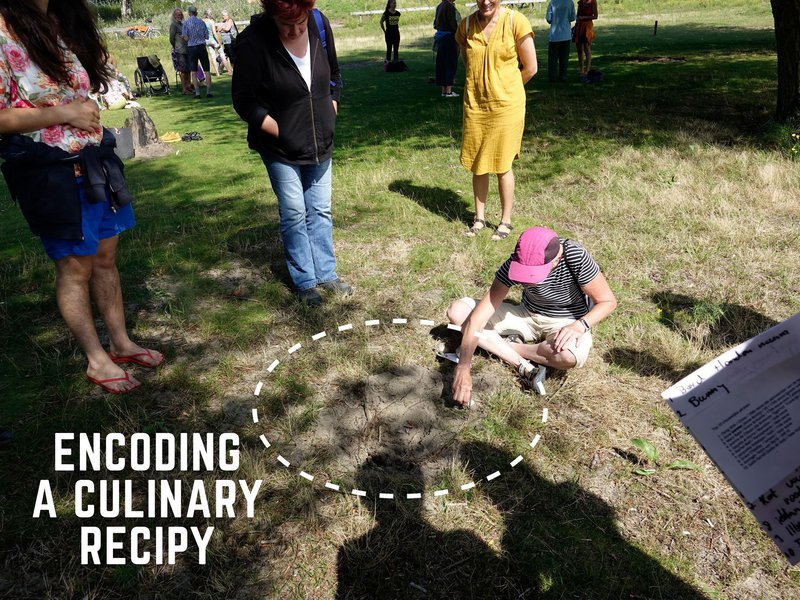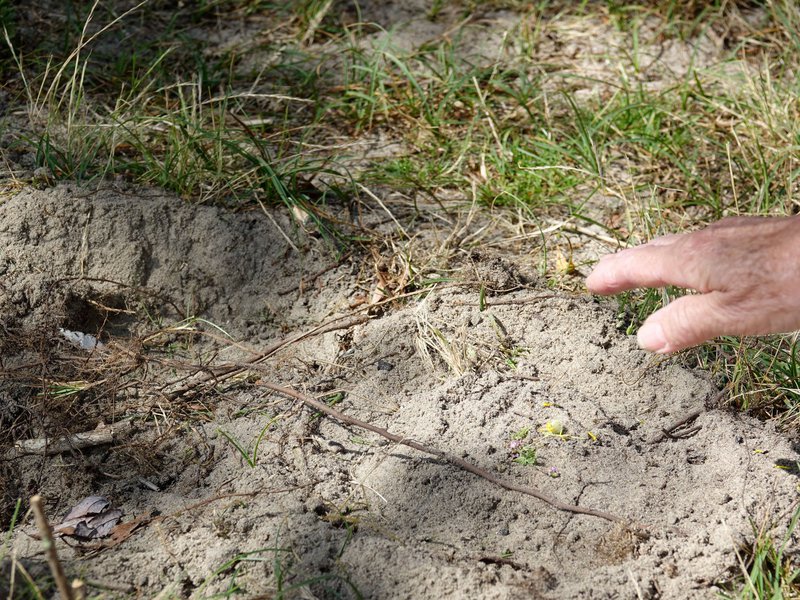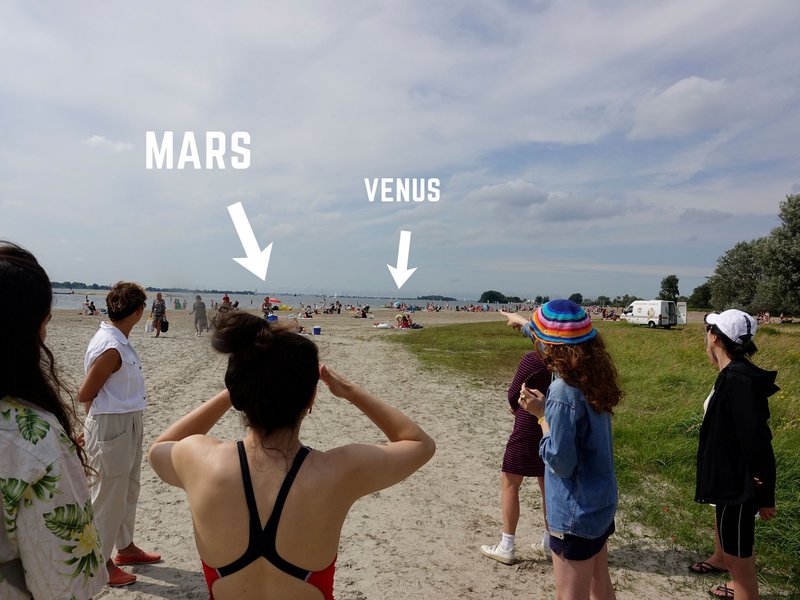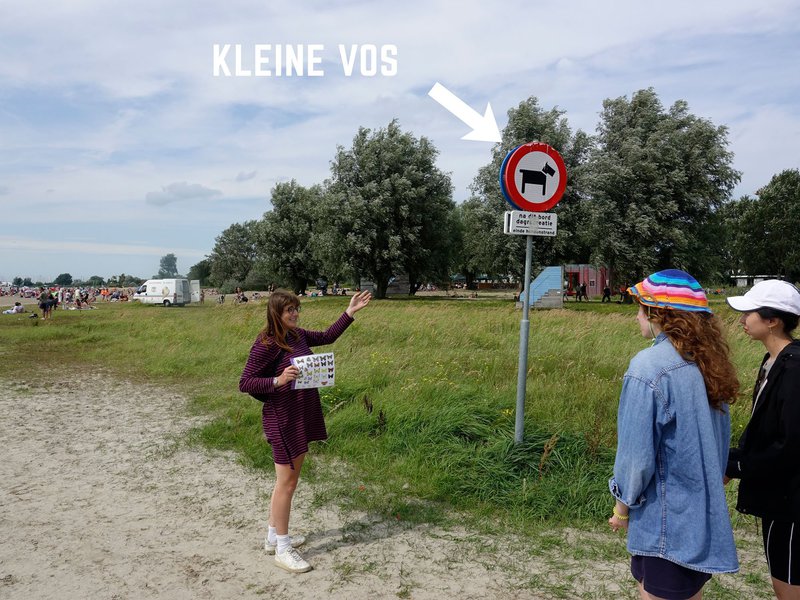MonsterCode StrandLAB
Posted Oct. 18, 2021 by Theun Karelse
In MonsterCode, monster refers to imagination and code to encoding. It looks at ways in which knowledge or culture more generally was shared and consolidated before there was written text. Before literacy knowledge was past orally (in many contexts there still is of course) in an enormously diverse range of ways, but MonsterCode focuses on one specific kind: encoding knowledge directly into the environment itself.
Basically this constitutes associating knowledge to durable features ('hooks') in the landscape, invoking the power of imagination and story. That power is considerable, as evidenced by the practices of oral cultures around the world. When narratives are associated to long lasting features of landscape they can remain intact over thousands of years and span thousands of km.
Where features are subtle or unremarkable the imagination kicks in. An indistinct patch of forest or city architecture can be augmented by assigning a giant monster or a weird little gnome to it. Hence a boring setting can be populated by the most amazing beings or other narrative triggers to root solidly in the human psyche.
People who have re-started this practice report their world becomes filled with new layers of liveliness: you are not just walking to the bakery or office, you are walking through the history of early humans, a catalogue of poisonous plants, or whatever you happen to have 'encoded' locally. And once started, the urge grows to add to your worlds; to build them further.

In these first two public sessions we spent the afternoons with groups of 10 guests. First we collectively enacted our names as movements. Then we gave a general introduction to the practice, after which participants were provided with 'data sets' to practice with around the beach.
Our basic 'data sets' were varied in structure, size and character:
- the planets
- elementary particles
- a recipe for plum filled pie
- local drowned villages (with map)
- names of top ten female pirates
- info on 5 extinct European elephants
- various identification leaflets for butterflies, insects, mollusks and birds
- people were free to come up with their own 'set', but most just picked one of the above


Outcomes
The ways in which people apply their imagination to the environment is super diverse. Things were encoded according to color resemblances, geographic similarity, relative spacial distribution, size, shape, linguistic similarity or body movement. Trees were often used as hooks, but also sunbathing humans, small objects, signs, infrastructure, patches of vegetation, trash, flags or islands in the water.
Some people report that this is their natural modus operandi; "you can ask me the telephone number of the house I lived in 30 years ago in the US, because I see the phone-number on the phone, in the house, in the neighbourhood, with all my friends there." Some guests turned out to be virtuoso monstercoders.

The second afternoon concluded with a discussion on memory related to landscape and cultures. Some of the thoughts and comments:
- Intuitively books seem a very stable way of consolidating knowledge or story, but looking at how quickly environmental knowledge erodes (shifting baselines) and how robust that was in some oral traditions (retaining environmental or phenological knowledge over thousands of years) I start to doubt that assumption.
- Code is around us everywhere even here, like the Heineken flags of the beachcafe, they are in my subconscious mind and some are heavily laden with meaning, like the statues historic figures, which may not feel very relevant to me, so we might reappropriate them. The original intention might be that it is a statue of Churchill, but I could make it my drag-queen-goddess of queerness!
- I think the beach as a memory palace is very poetic.
- Our media narratives are increasingly global, but orality may reflect very local and situated stories and truths. They don't need to be accessible to everyone, everywhere, all the time.
- This way of using the environment reminds me of how language is sometimes learned by going to a bar and the richness of that environment (the drink, the activities, etc) give context to learning and remembering; you remember the new words by the fullness of the experience.
- What kinds of mythologies could we build now to continue to next generations?
- Where there is landscape there is story, or perhaps landscape even is story, but story is always set in a world.
- In my work I support indigenous knowledge holders and we ask them how to pass their knowledge on, because they may not want to be recorded on audio or video, etc. So its very individual and context specific.
- When Buddha still lived no books were written, people just listened, those books came later, centuries later even.
MonsterCode on the beach was lead by Theun Karelse, Rots Brouwer and Yawen Fu as part of StrandLAB Almere Field Academy summer sessions by Cocky Eek.
https://strandlab-almere.nl/monstercode/

kleine vos is a kind of butterfly encoded here into the sign
Created: 18 Oct 2021 / Updated: 03 Aug 2022






